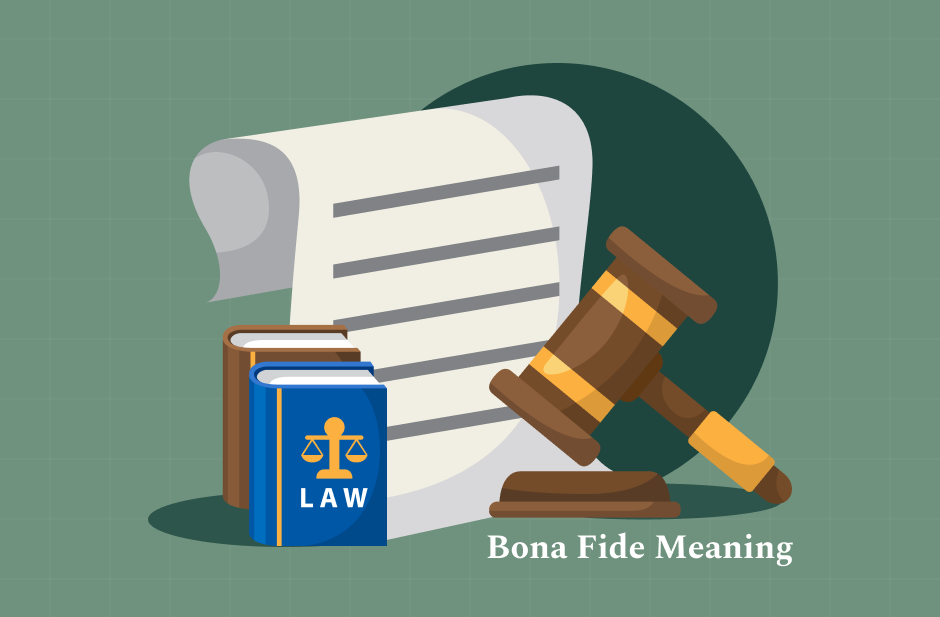Have you got the next big invention up your sleeve? Before you unleash it, listen up! Protecting your ingenious ideas is a must in this competitive world. That’s where patent law comes to the rescue! Patents are like a force field around your creations, keeping copycats away. But getting one takes some know-how.
This guide will equip you with all the knowledge and secrets to navigate patent law like a pro. We’ll explore the process of when to apply and why safeguarding your intellectual property is so important. No legalese or jargon, just straightforward talk on locking down your innovations. You worked hard cooking up those clever concepts – don’t let anyone swipe them! Stick with us, and we’ll help you master patent law so you can keep innovating fearlessly.
An Overview of IP Law
In this section, we will delve into the basics of intellectual property law and explore its various forms, including patents, trademarks, and copyrights. Understanding IP law is paramount in safeguarding your innovations and intellectual property rights. Resources like the IP law forum can provide valuable information to help inventors and innovators comprehend the intricacies of intellectual property regulations.

Patents shield the precise and novel aspects of an invention, at the same time as logos protect branding, logos, and different distinguishing features of a corporation’s products or services. Copyrights, on the other hand, guard authentic works of authorship, inclusive of literary, musical, or artistic creations.
To fully recognize IP regulation, it’s crucial to utilize sources just like the IP regulation discussion board, which affords valuable insights into the intricacies of intellectual property rules. By making use of such assets, inventors and innovators can benefit from comprehensive know-how of patent regulation and make informed selections while looking to protect their creations.
Having a stable foundational understanding of IP law is essential to safeguarding your improvements and intellectual belongings rights in a brand new market. It will let you keep away from criminal pitfalls and make certain that your intellectual assets are protected from infringement. Therefore, it is crucial to keep yourself updated with the contemporary developments in IP law and search for expert recommendations while vital.
Types of Intellectual Property
Intellectual property encompasses different forms of legal protection for creative works, inventions, and brands. The main types of intellectual property are:
- Patents: Patents protect new inventions and provide exclusive rights to the inventor for a limited period. They prevent others from making, using, selling, importing, or distributing the patented invention without the owner’s permission.
- Trademarks: Trademarks protect distinctive signs, such as logos, names, and slogans, that distinguish products or services from others in the market. Trademarks help consumers identify and associate specific brands with particular goods or services.
- Copyrights: Copyrights protect original creative works, such as literary, artistic, and musical creations, as well as software, films, and architectural designs. Copyright grants the creator exclusive rights, such as reproduction, distribution, and public display.
Importance of Intellectual Property Rights

Intellectual property rights play a crucial role in innovation and economic growth. They incentivize creators and inventors to invest time, effort, and resources into developing new ideas, products, and technologies. By protecting their intellectual property, innovators can monetize their creations and gain a competitive advantage in the market.
The Role of IP Law in Protecting Innovations

IP law provides a legal framework to protect innovations and ensures fair competition in the marketplace. It allows inventors and creators to prevent others from using, copying, or profiting from their ideas without authorization. By obtaining intellectual property rights, individuals and companies can secure their innovations and maintain a competitive edge.
| Forms of Intellectual Property | Key Features | Examples |
| Patents | Exclusive rights to inventions | Pharmaceutical drugs, technological devices |
| Trademarks | Distinctive signs for brands | Apple logo, Nike slogan |
| Copyrights | Protection for creative works | Books, music albums, software |
Understanding U.S. Patent Law

In this section, we will provide a comprehensive understanding of U.S. Patent Law and guide you through the requirements and processes involved in obtaining patent protection for your innovations. With a clear grasp of the different types of patents available and the criteria for patentability, you will be equipped to secure your inventions under U.S. Patent Law.
The Types of Patents

When it comes to patent protection, it’s crucial to understand the various types of patents and their suitability for your innovations. In the United States, three main types of patents are granted:
- Utility Patents: These patents cover new and useful processes, machines, compositions of matter, and improvements thereof. They are the most common type of patent and provide broad protection for a wide range of innovative ideas.
- Design Patents: Design patents protect the unique appearance of a product or article of manufacture. They focus on the ornamental characteristics and aesthetics rather than the functional aspects of an invention.
- Plant Patents: Plant patents are granted to those who have invented or discovered and asexually reproduced a distinct and new variety of plants.
Each type of patent serves a different purpose and requires specific criteria to be met. It is important to evaluate which type is most appropriate for your invention to ensure proper protection.
Criteria for Patentability

Obtaining a patent requires meeting certain criteria set forth by U.S. Patent Law. The following requirements must be satisfied:
- Your invention must be novel, meaning it is new and different from anything that has been publicly disclosed or patented before.
- The invention must involve an inventive step. It must not be an obvious improvement or a combination of existing technologies.
- It must have industrial applicability, meaning it must be capable of being used or manufactured in some form of industry.
By fulfilling these requirements and demonstrating the uniqueness and applicability of your invention, you can increase your chances of securing patent protection.
Securing Your Innovations

Securing patent protection for your innovations involves a series of steps and procedures. The following are key actions you need to take:
- Conduct a Prior Art Search: Before applying for a patent, it is crucial to conduct a thorough search to identify any similar inventions or prior art that may affect the novelty and patentability of your innovation.
- Draft a Strong Patent Application: A well-crafted patent application is essential to effectively communicate the unique features and inventive steps of your innovation. It should include detailed descriptions, claims, and drawings, adhering to the required format and guidelines outlined in U.S. Patent Law.
- File the Patent Application: Once you have prepared the patent application, you must submit it to the United States Patent and Trademark Office (USPTO) along with the required fees.
- Respond to Office Actions: After filing your application, a patent examiner at the USPTO will review it and issue any office actions, which are formal notifications requesting further information or addressing potential issues. It is crucial to respond to these actions promptly and thoroughly to navigate the examination process.
- Pursue Patent Prosecution: Patent prosecution involves back-and-forth communication between the applicant and the patent examiner to ultimately secure a granted patent. This process may require amendments to the claims, arguments, and negotiations regarding the scope of patent protection.
- Maintain and Enforce Your Patent: Once your patent is granted, it is essential to maintain it by paying maintenance fees and ensuring it doesn’t lapse. You also have the right to enforce your patent against any infringement.
By following these steps and working with a qualified patent attorney, like a San Jose business law attorney, you can navigate the intricacies of U.S. Patent Law and secure robust protection for your innovations.
Navigating the Patent Application Process

In this section, we will guide you through the intricacies of the patent application process. If you have an innovative idea or invention, obtaining a patent is essential to protect your intellectual property and secure exclusive rights. Understanding the patent application process under U.S. Patent Law is crucial to ensure a smooth and successful application.
Prior Art Search
Before filing a patent application, conducting a thorough prior art search is crucial. This involves searching existing patents, published patent applications, scientific literature, and other publicly available sources to determine if your invention is novel and non-obvious. A comprehensive prior art search helps you identify any similar inventions that may impact the patentability of your innovation.
Drafting a Strong Patent Application
Once you have conducted a prior art search, the next step is to draft a strong and detailed patent application. Your application should clearly describe your invention, its unique features, and how it solves a particular problem or offers a significant improvement over existing solutions. It is crucial to include accurate and comprehensive patent claims that define the scope of your invention.
The Role of Patent Examiners
After submitting your patent application, it undergoes a thorough examination by a patent examiner from the United States Patent and Trademark Office (USPTO). The examiner carefully reviews your application to determine whether your invention meets the legal requirements for patentability. They may request additional information or amendments to your claims during the examination process.
Responding to Office Actions
If the patent examiner raises objections or rejections in an office action, it is essential to respond promptly and effectively. Addressing the examiner’s concerns and providing strong arguments and supporting evidence can increase the chances of overcoming these objections and ultimately securing patent protection for your innovation.
Finalizing the Patent Application Process
Once you have submitted a patent application on your invention, the USPTO will conduct a thorough review of your software to make sure that it meets all of the important necessities for patentability. During this evaluation method, the patent examiner can also issue workplace actions figuring out objections or rejections for your application. It is critical to cautiously deal with every of those objections in a well timed and powerful way to keep away from delays or even rejection of your application.
If you’re able to effectively deal with all the objections and issues raised by way of the patent examiner, your utility will flow towards the final tiers of the patent process. At this factor, you may want to pay the desired costs, ensure that each essential files are submitted, and wait for the issuance of the patent.
Upon issuance of the patent, you may be granted special ownership and the proper to enforce your rights over the invention. This method may save others from making, the usage of, or selling your invention without your permission.
To maximize your possibilities of achievement in acquiring valuable patent protection for your revolutionary ideas, it’s vital to have deep know-how of U.S. Patent Law and to pay careful attention to elements. Conducting a radical earlier art seek, drafting a sturdy patent utility, and following the pointers set by means of the USPTO can all assist in growing your probability of success.
Conclusion
In modern rapid-paced commercial enterprises internationally, innovation is a key driver of achievement. In order to guard those innovations and hold an aggressive area, it is vital to have a stable knowledge of U.S. Patent regulation. By doing so, you may ensure that your creations are safeguarded and your highbrow property rights are secured.
Intellectual belonging rights encompass patents, logos, and copyrights. These protections make sure that your improvements aren’t used without your permission or authorization. Familiarizing yourself with the patent software system and responding to workplace movements efficiently can significantly enhance your chances of securing a patent.
It is important to proactively shield your innovations via the U.S. Patent Law framework. This not handiest protects your creations but also promotes a lifestyle of innovation and stimulates opposition in the market. By adhering to U.S. Patent Law, you may make certain that your enterprise remains in advance of the curve and continues its competitive advantage inside the ever-evolving international of business.
READ ALSO:
















